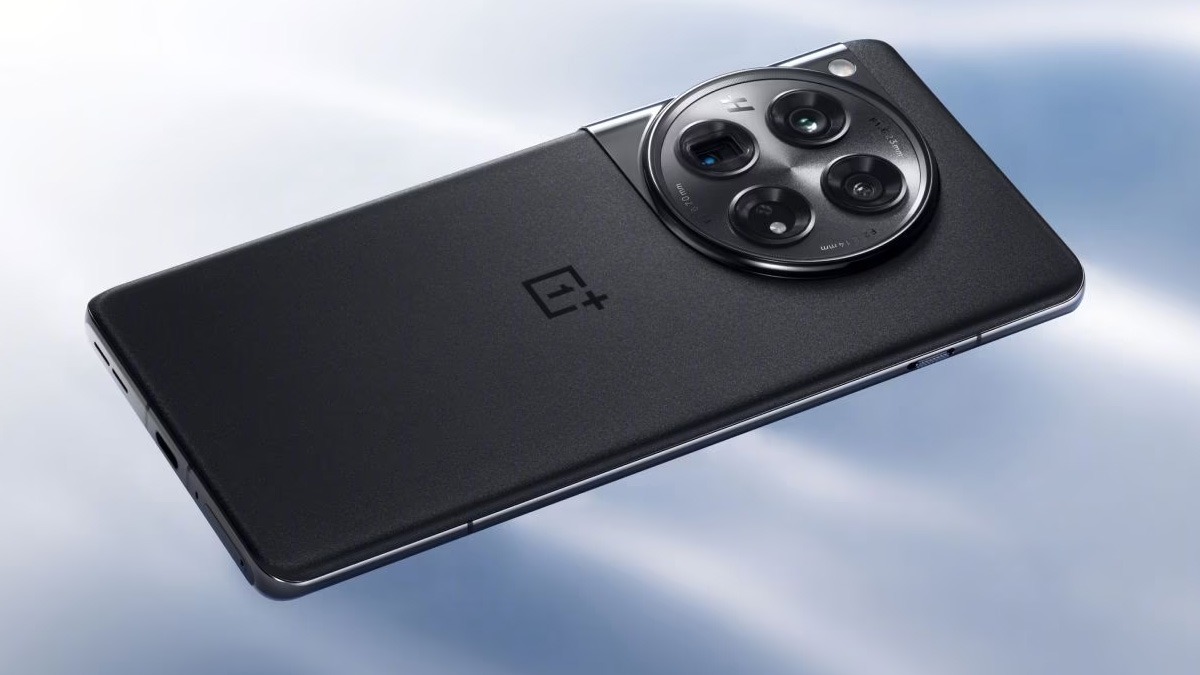Just In
- 10 min ago

- 36 min ago

- 1 hr ago

- 17 hrs ago

Don't Miss
- Movies
 Paarijatha Parvam Full Movie Leaked Online In HD For Free Download Hours After Its Theatrical Release
Paarijatha Parvam Full Movie Leaked Online In HD For Free Download Hours After Its Theatrical Release - Finance
 Daily Relative Strength Index RSI In A Bullish Mode of This Pharma Stock; Buy For TP Rs 635-685
Daily Relative Strength Index RSI In A Bullish Mode of This Pharma Stock; Buy For TP Rs 635-685 - News
 Indonesian Volcano Spews Clouds Of Ash, Authorities Evacuate Over 2,100 People
Indonesian Volcano Spews Clouds Of Ash, Authorities Evacuate Over 2,100 People - Lifestyle
 Parineeti Chopra Saree Looks: Check Amar Singh Chamkila Actor's Regal Fashion Statements
Parineeti Chopra Saree Looks: Check Amar Singh Chamkila Actor's Regal Fashion Statements - Sports
 RCB Green Jersey Match: Record And Stats Ahead of KKR Meeting in IPL 2024
RCB Green Jersey Match: Record And Stats Ahead of KKR Meeting in IPL 2024 - Automobiles
 Mahindra XUV 3XO SUV – Everything We Know So Far
Mahindra XUV 3XO SUV – Everything We Know So Far - Education
 Exam Pressure Does Not Exist; Studying Punctually is Crucial; Says Aditi, the PSEB 2024 Topper
Exam Pressure Does Not Exist; Studying Punctually is Crucial; Says Aditi, the PSEB 2024 Topper - Travel
 Journey From Delhi To Ooty: Top Transport Options And Attractions
Journey From Delhi To Ooty: Top Transport Options And Attractions
How Acer amplified the performance of its Aspire E15 using the Optane Memory
Here's how the Optane memory makes a difference.
As the PC market is moving towards faster computing each passing day, Intel has been closely working to deliver new technologies that will not only be good for the latest devices but also give a new edge to the older systems as well. One of such technologies is the new Optane Memory, which was unveiled along with the seventh generation Intel processors.

Intel positions Optane memory to offer SSD-like speeds, especially those systems equipped with slower HDDs. As of now, Optane is a bit tricky, both on requirements and implementation. But Acer has managed to bring this new technology to its Aspire E series of budget laptops. But, before we dive into the performance of Acer's laptop, it's imperative to understand the new technology first.

What is it?
Optane memory is basically a design module developed to deliver hyper-fast speed and improve the performance of a PC or a laptop. Initially, it was introduced as an additional data cache between CPUs and storage devices including spinning HDDs. But, now there are Optane-based SSDs that have proved to be a better alternative scoring high on benchmarks.
The new Optane memory is compatible with supported motherboards that use Intel 7th-generation Core processors (i3, i5, and i7 chips in the 7XXX series) and also the latest 8th-generation Core processors (i3, i5, and i7 chips in the 8XXX series).
Optane shouldn't be confused as a kind of RAM for PCs. Also, it isn't a new type of conventional storage, not yet. Instead, the consumer-level M.2 Optane modules are developed to work as a cache memory bridge between RAM and storage of the device.
What Optane actually does is that it allows for zippy data transfer between the device's memory, storage, and processor. This results in accelerated functioning for the end users. This works even better when the system is backed with caching software that obscurely stores relevant data on the Optane drive.

How it helped Acer?
The most notable advantage of placing an Optane memory chip on a laptop is its non-volatile nature. This means that no data is lost even after the system shuts down, a feature missing on the conventional DRAM.
Since no data is lost, it's faster to access or start a program, making the life of the users even easier. By bringing 3D XPoint and an advanced memory management software together, it merges laptop's memory and storage into a single, virtual drive. Acer Aspire E 15's 16GB Optane memory module, aims to make the standard 1TB hard drive in this budget laptop feel almost as fast as the SSDs you get with the costlier laptops.

Boot time and app launch
We tested two Acer Aspire E 15 laptops - one with Optane memory, while other without one. We noticed that the one with Optane memory took less time to finish the booting process. It took nearly 15 seconds to boot up, while the one without the Optane memory spent around 45 seconds to get done with the process. This happens because Optane memory makes the launch data readily available once the device is fired up.
As these are laptops aimed towards productivity seekers, we tried using Adobe suite on both laptops to see how the conventional memory compares with Optane. It took the Optane-powered Aspire E15 only 45 seconds to launch the suite, while the other model sans the new technology took something around one minute to launch the application.
We saw a major difference between the two while launching Premiere Pro. The model with Optane memory took under 30 seconds to perform the action, while the other model took more than two minutes to launch the app.

Does it boost Gaming?
Since the Acer Aspire E 15 laptops aren't meant for extensive gaming, we wouldn't be judging the gaming performance of the laptops, but the difference made by Optane memory while playing less graphics-hungry games.
We tried playing games like FIFA 2017, PUBG, GTA IV, and few more. We didn't notice a major difference in the load time while launching FIFA 2017, but launching PUBG we saw a major difference between the two. There was at least a 30 seconds gap between the launch time of the two.
It's worth noting that the Optane memory won't amplify the frame rate or churn out better performance while gaming. What it does is basically caching the most used apps and files making them quickly accessible. This makes the laptop feel better, but it does not make any difference to the UFPS in games, that is taken care by the processor, graphics card and the RAM of the laptop.
The Optane memory does the same with other apps in order to launch them faster. Additionally, the memory also adapts to the usage pattern of the user and puts relevant data at the front of the queue based on the history.

Other advantages
Using the Optane memory, Acer has managed to offer a better performance without having to increase the price by a huge margin. Optane is by far the cheapest alternative to dual-drive systems. It features both small SSDs and a larger hard drive for mass storage, making it an ideal choice.
Acer, by making the right use of this new technology has made it possible for consumers to buy a laptop with a huge capacity hard drive that is plenty enough to store your files, games, multimedia and still get an SSD-like speed and responsiveness.
Users will no longer have to choose between a zippy performance and high storage drives. And the best part is that the Optane memory doesn't really add up to the price that much.
-
99,999
-
1,29,999
-
69,999
-
41,999
-
64,999
-
99,999
-
29,999
-
63,999
-
39,999
-
1,56,900
-
79,900
-
1,39,900
-
1,29,900
-
65,900
-
1,56,900
-
1,30,990
-
76,990
-
16,499
-
30,700
-
12,999
-
62,425
-
1,15,909
-
93,635
-
75,804
-
9,999
-
11,999
-
3,999
-
2,500
-
3,599
-
8,893












































